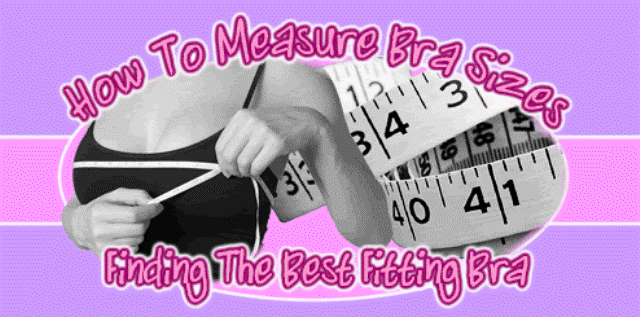How To Measure Bra Size
Surprisingly, so many women wear the wrong bras
despite there being a wide range of sizes and styles available. An unsuitable
or ill-fitting bra can cause health problems such as chronic headaches, irritation
and straining on shoulder joint structures, back pain in lower spinal region,
and cervical spine problems among others.
You can easily tell whether you are wearing the
right bra size if there is no wrinkling in the cups, cup spillage, slipping
straps, poking of the sides of your breast by underwires, hiking up of the bra
when the arms are raised, or general discomfort.
The best way to counter all of the above mentioned
problems and to get a well-fitting, comfortable bra is to get the correct bra
size. This can be achieved by knowing how to measure bra size.
1. Determine
Band Size
The first step in measuring your
bra size is to determine your band size. While wearing a non-padded bra, take a measuring
tape, keep it parallel with the ground, and then measure around the bra, at the
bottom of the band directly under your bust. You should exhale all air from
your lungs when doing the measurement.
If you get fractional measurements,
round them to the nearest whole number. Then take the measurement to the Band
Size Chart shown below.
Band Size Chart
|
||||||||||||||
If Under Bust Measurement
(In inches) is:
|
25
|
26
|
27
|
28
|
29
|
30
|
31
|
32
|
33
|
34
|
35
|
36
|
37
|
38
|
Your Band Size is:
|
30
|
30
|
30
|
32
|
32
|
32
|
34
|
34
|
34
|
36
|
36
|
36
|
38
|
38
|
If the Under Bust Measurement is
beyond 38, the band size will be the even number closest to the actual
measurement. For example if the Under Bust measurement is 39, the Band Size
will be 40. If the Under Bust measurement is 41, the Band Size will be 42 and
so on.
2. Measure
the Cup Size
The next step is to determine your
cup size. This is achieved by placing the tape measure around the fullest part
of the bust (the nipple level), while keeping the measuring tape parallel with
the ground. Round off that measurement to the nearest whole number.
To get your Cup Size, subtract the
Band Size from the Cup (Bust) Measurement. Use the Chart shown below to
determine your Cup Size.
Difference (In
inches)
|
0
|
1
|
2
|
3
|
4
|
5
|
6
|
7
|
Your Cup Size is:
|
AA
|
A
|
B
|
C
|
D
|
DD
|
DDD,F
|
G
|
For example if your Cup Measurement
is 37 inches and your Band Size is 34 inches, the difference will be 3 inches. Your
cup size will therefore be C, which makes your Bra Size to be 34C.
Having known how to measure bra
size, you can try out a few tips to ascertain if a particular style would fit
you.
For example, you can check whether
a bra is too tight or too loose by trying to slide one finger underneath the
band. If the finger slides comfortably, then the bra is well-fitting but if 3
or more fingers can slide in, then the bra is too loose.
Should you feel the need to scale
up to a bigger cup size for fit, go down one band size, and vice versa.
When determining your correct Bra
Size, it is best to first find the best band size for you, and then keep on
adjusting the Cup Size until you find get the one that fits best.



